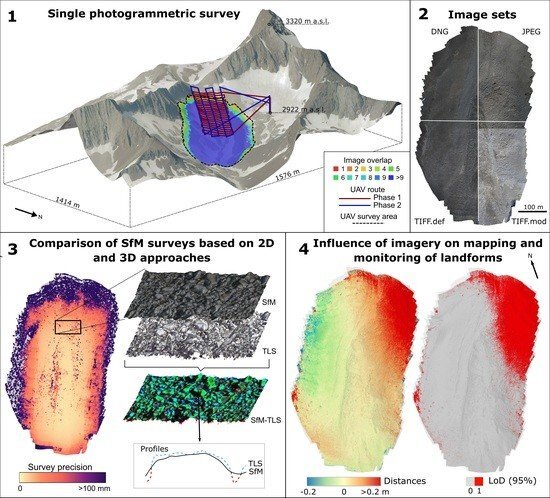

Adrián Martínez Fernández, the technician in charge of the Digital Mapping and 3D Analysis Laboratory at the Centro Nacional de Investigación sobre la Evolución Humana (CENIEH), is the lead author of a paper published in the journal Remote Sensing on how the properties of images captured by drones influence the representation and monitoring of high-mountain environments in photogrammetric surveys. This study, in collaboration with the CENIEH geologist Alfonso Benito Calvo, sets out the possible pitfalls of employing images from low-cost drones, and how these can be mitigated.
Applying drone imagery and photogrammetric techniques to mapping and monitoring geomorphological objects is now habitual in natural heritage studies. This equipment is accessible as it continues to come down in price and because of how easy it is to generate 3D models of large areas.
The new results show that processing the images produced by some of the most popular drone models need not necessarily affect the resulting maps. However, if the objective is to measure movement of the surfaces photographed over time, issues such as variations in the lens profiles of images could have a significant influence on the deformations quantified.
“While drones have become tools of great utility in studies relating to the geosciences, it is a good idea to possess some knowledge of the principles of photogrammetry and to analyze the resulting models judiciously. This is because even one of the main components of the technique, namely the images, can affect the results and how we interpret them later,” says Martínez Fernández.
The study was conducted at the rocky glacier La Paúl, in the Pyrenees in Aragón, which is an icy body undergoing constant movement because of interior melting processes, and it is of interest because of how it contributes to our understanding of regional and global climate change.
The other participants in the study were researchers attached to the Research Group Natural Heritage and Applied Geography (PANGEA), at the Universidad de Valladolid, the Universidad de León, the Universidad de Extremadura, and the Natural History Museum in London (United Kingdom).
Researchers explore new method for glacial melt reduction
Adrián Martínez-Fernández et al, The Influence of Image Properties on High-Detail SfM Photogrammetric Surveys of Complex Geometric Landforms: The Application of a Consumer-Grade UAV Camera in a Rock Glacier Survey, Remote Sensing (2022). DOI: 10.3390/rs14153528
Provided by
CENIEH
Citation:
A study raises questions about using drone images for environmental monitoring (2022, July 27)
retrieved 27 July 2022
from https://phys.org/news/2022-07-drone-images-environmental.html
This document is subject to copyright. Apart from any fair dealing for the purpose of private study or research, no
part may be reproduced without the written permission. The content is provided for information purposes only.